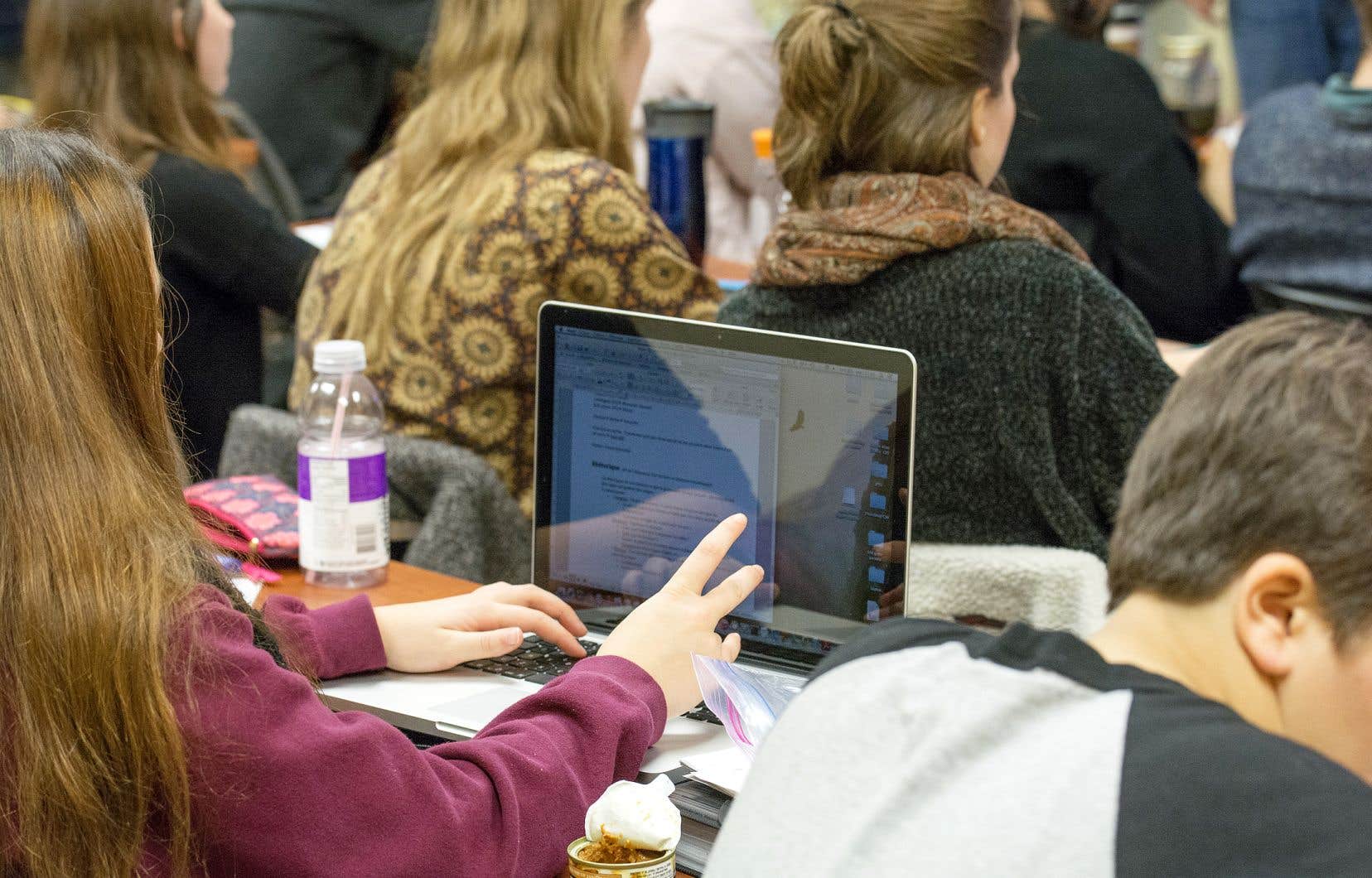Full employment and the effects of the pandemic are testing student motivation. Enrollment is down in Quebec universities, especially in short undergraduate programs that qualify for employment.
The number of university students in Quebec has fallen back to 2015 levels after an increase in the number of students in recent years, indicates data obtained by The duty. The downward trend began with the pandemic three years ago: the university network lost nearly 5,000 students (minus 1.6%) between fall 2020 and fall 2022, mainly due to the fall new registrations.
“I don’t think we’re in a crisis. There has not been an extreme decline, but overall I am concerned about the situation at the undergraduate level,” says Daniel Jutras, rector of the Université de Montréal (UdeM) and president of the Bureau de coopération interuniversitaire (BCI). , which brings together 18 Quebec institutions.
Short undergraduate programs, such as certificates, which had become the cash cow of universities for the past ten years, are losing momentum. At UdeM, the number of enrollments has fallen by 17.7% in four years in these one-year courses. A loss of 1728 students.
These short programs normally attract young or old who are looking to improve their skills in order to obtain a job or a promotion. With the shortage of workers, some no longer need this additional training: companies are so short of staff that they resign themselves to hiring less qualified workers than before, note several sources in the university network.
Some companies now prefer to train emergency workers themselves. “In many areas, universities face competition from accreditation and certification programs recognized by employers,” explains Jenny Desrochers, spokesperson for the Université du Québec à Montréal (UQAM).
Bachelor’s enrollments are relatively stable in the network, while enrollment is increasing in master’s and doctoral programs. In the world of higher education, it is considered that these trends primarily reflect a decline in motivation among CEGEP students. They take longer than in the past to obtain their college diploma. Many take their time before enrolling in university. Or don’t go.
UQAM down
UQAM is one of the most affected by this apparent disaffection of young people towards higher education. Undergraduate enrollment has dropped markedly since 2018 at the Latin Quarter institution. The number of students in short programs such as certificates fell by 34% in four years (a loss of 3201 students). In the baccalaureate, the drop was 7% during the same period (1,292 fewer students).
“Recruitment is one of the concerns of the new rector, Stéphane Pallage, who made it an issue in his campaign for the rector last March. Recruitment actions, here and abroad, are part of the priorities of his mandate,” says Jenny Desrochers, from UQAM.
The French-speaking university in downtown Montreal is suffering the repercussions of the attraction of its English-speaking twin sister, Concordia, to French-speakers. The enrollment of the English-language establishment exceeded that of UQAM as of 2018.
UQAM is particularly suffering from the loss of attractiveness of certificate programs, which for a long time welcomed more than a quarter of its students, recalls spokesperson Jenny Desrochers. The number of students at UQAM is thus decreasing, despite the increase in enrollments at the master’s and doctoral level.
The Latin Quarter establishment has taken a series of measures to increase its popularity, including scholarships, DEC-BAC bridges and “one-day university” type immersion initiatives. The “100 million ideas” fundraising campaign even exceeded its objective by collecting $119 million from 17,500 donors. But this good news did not slow down the drop in registrations.
Avoid the worst
Overall, more than 311,000 students were attending the 18 Quebec universities at the start of the academic year last fall. Two years earlier, they were 316,000.
Université Laval is one of the establishments that avoided the worst. The workforce has dropped slightly in the past year, but registrations remain well above those of 2018 and previous years, underlines the spokesperson, Jérôme Pelletier. The university has seen a significant uptick in enrollment in the past decade, even during the pandemic years of 2020 and 2021.
The Quebec establishment is considered a “leader in distance education in Canada” with 1,100 courses offered in more than 140 programs. This virtual shift, undertaken before the pandemic, served him well during the confinement episodes due to COVID.
The University welcomes nearly 8,000 foreign students or permanent residents from more than a hundred countries. This number has also grown significantly in recent years.
Demographic wave
Daniel Jutras emphasizes that international recruitment is not a panacea. Foreign students represent about 15% of university enrollment and income (but much more in some cases, notably at McGill University).
The rector recalls that Quebec has put in place three-year financial assistance to maintain funding for universities struggling with declining enrollment. Institutions are funded largely on the basis of their enrolment, but fixed costs (such as salaries and maintenance costs) remain the same regardless of the number of students.
Mr. Jutras says he hopes that this assistance program will be extended at least until the expected increase in enrollment due to the demographic wave that has overwhelmed elementary and secondary schools in recent years. Hoping that the wave will be powerful enough to overwhelm the universities.
